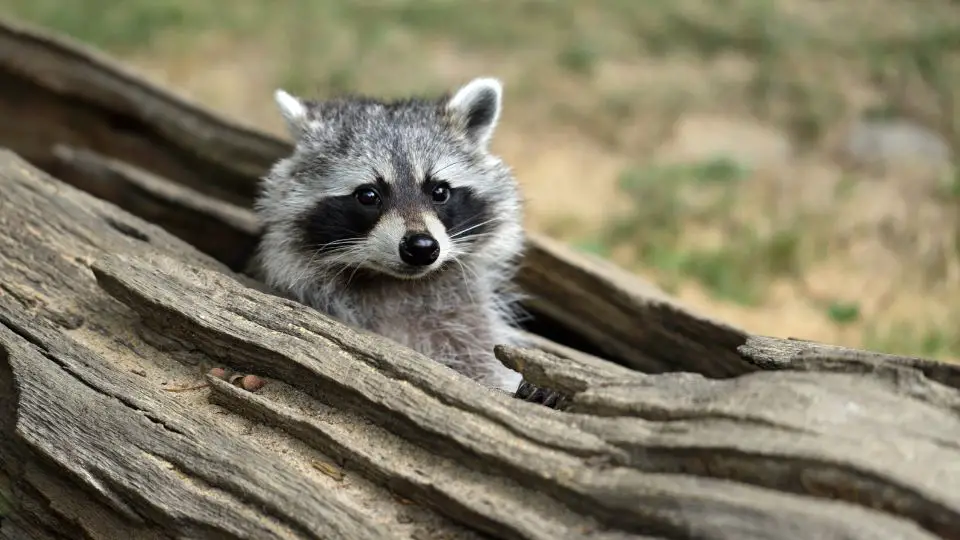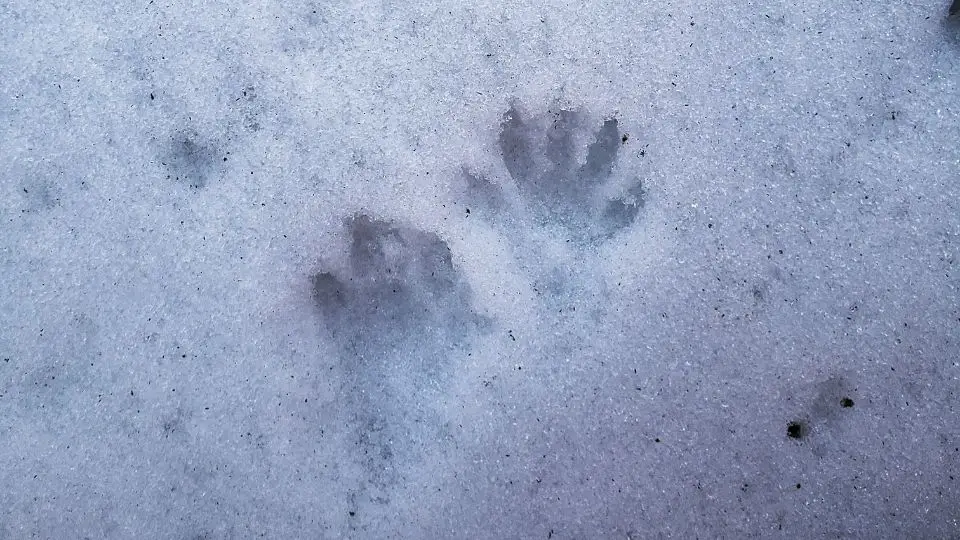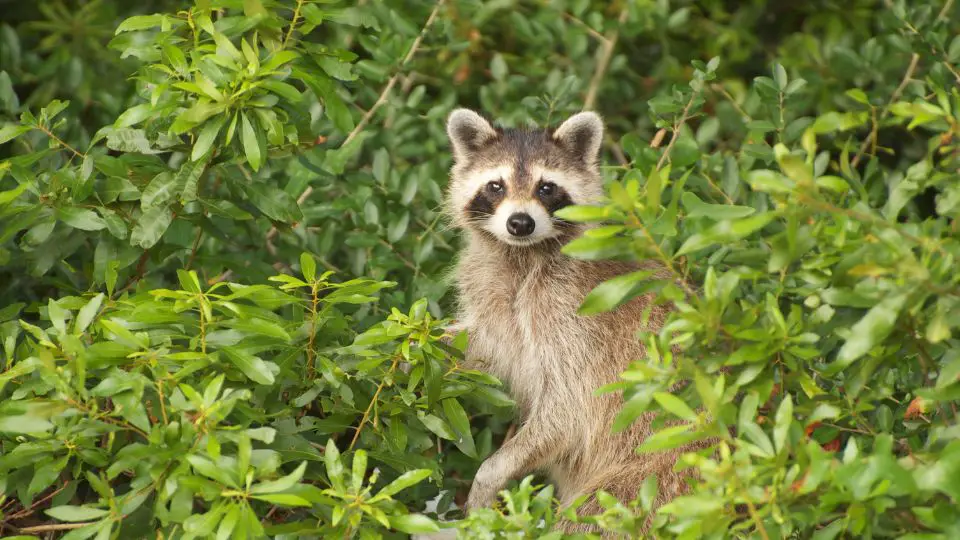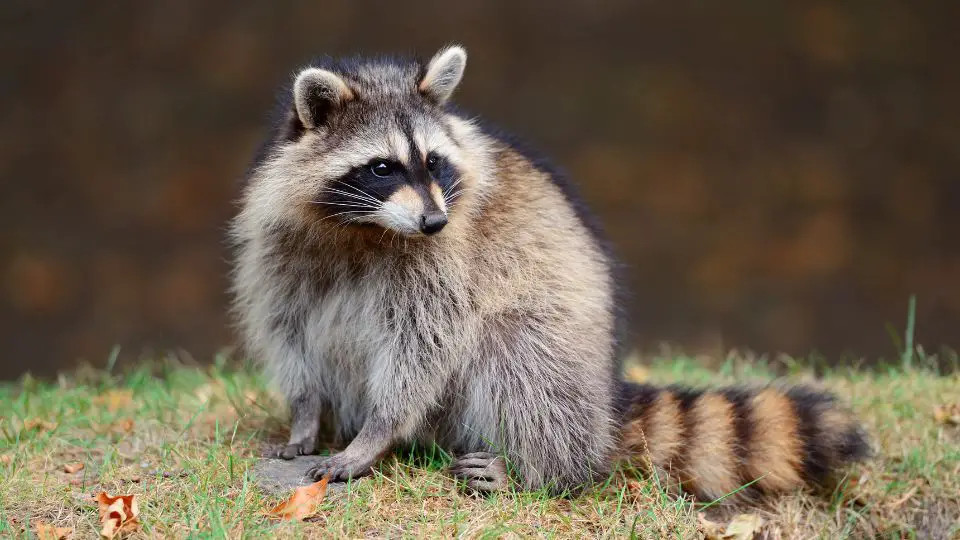Raccoons don't build nests at all. Instead, they inhabit nests that wild animals have abandoned like beavers, foxes, or skunks. They can also move into urban areas and take up residence in attics or crawlspaces.
Raccoons are adaptive creatures that can live in different types of habitats, including trees, caves, and even urban areas. These dens are typically located in hollow trees, rock crevices, or abandoned burrows.
Raccoons may also insulate their “nest” with leaves, bark, or other materials to keep warm during the colder months. Let’s take a closer look at what raccoon nests look like, how they’re built, and what to do when you spot one.
Table of Contents
What Does a Raccoon Nest Look Like?
There is no single answer to this specific question since raccoon nests can vary significantly in size, shape, and location. Raccoons don’t build nests, so their “nests” often resemble other animals’ abandoned dens.
Here are some places that a raccoon may occupy and call home:
- Abandoned burrows
- Leaf piles
- Rocky crevices
- Decking
- Attics
- Sheds
- Garbage dumpsters
- Trees
- Abandoned nests
That said, raccoon nests are typically modified to accommodate their size. For example, a burrow that a raccoon has taken over will often have the entrance enlarged to allow the larger animal to enter and exit.
They may also use hay and long grasses to make their nest more durable and comfortable. However, they often make use of what’s available nearby.

Where Do Raccoons Build Their Nest?
Raccoons build their nest near food and water sources. Being near food scraps is vital to these omnivores. If your home provides easy access to garbage cans or pet food, a raccoon won’t hesitate to take up residence nearby.
Raccoons are also attracted to areas with rivers and streams. The water is not only a source of hydration for these animals but also a place to cool off and find various types of food.
In urban areas, raccoons often build their nest in attics, crawlspaces, or sheds. This provide shelter from the elements and predators. Additionally, these locations often give raccoons easy access to food sources like garbage cans.
How to Find a Raccoon Nest?
Finding a raccoon nest is not simply finding a specific structure. These animals don’t make nests in the first place, making it easy for them to stay undetected.
However, some signs can indicate the presence of a raccoon. Here are some telltale signs of raccoons on your property:
Pawprints
Raccoons have distinct thumbs that make their paw prints easy to identify. They are often compared to human children’s handprints.
Droppings
Raccoon scat is typically dark and tubular. But most importantly, these animals defecate in one area referred to as the latrine. If there’s scat nearby, a den site is likely within proximity.
Fur
In springtime, raccoons shed their white, grey, black, and brown coat. This hair can be found near their nesting area.
Noises
Raccoons are nocturnal, frequently vocalizing during the night. If you hear noises from your attic or crawlspace, it’s likely a raccoon skulking about.
Rub marks
Raccoons mark their territory by leaving greasy rub marks on objects like trees, fences, and walls. These marks are often located near their nest.

What Should I Do When I Locate a Raccoon Nest?
After confirming the presence of a raccoon nest, the next step is to remove them from your property safely. That said, these animals are carriers of various diseases and parasites that can be harmful to humans, such as rabies.
Additionally, raccoons can become aggressive when cornered or threatened. For these reasons, it’s best to leave the removal process to a professional.
A pest control specialist will have the necessary experience and equipment to safely remove both adult and baby raccoons. They can also advise how to prevent future infestations.
In many states, it’s illegal to kill or relocate raccoons a certain distance from your property. Check your local city, county, and state laws before taking any action.
Raccoon Nest Removal Tips
To avoid raccoons from invading your property, you should start by taking raccoon removal measures in your own home. Here are some tips to drive away raccoons:
Seal up any entry points
Raccoons can squeeze through small spaces. So, identify and seal up any cracks or holes in your home, including chimneys, vents, and gutters.
Remove potential food sources
When there’s no food around, raccoons will likely move on to a new location. To do this, keep your trash cans tightly sealed, and don’t leave pet food out.
Build raccoon-proof fences
Electric fences can deter raccoons from getting onto your property. To build an effective barrier, the fence should be at least eight inches off the ground.
Cut back vegetation
Raccoons use trees and shrubs to climb onto roofs. To prevent this, trim back branches close to your property—especially near your rooflines, gutters, and attic vents.

Once you’ve minimized the chances of raccoons returning to your property, you can clean the area where the nest was located. It’s highly recommended to wear gloves and a mask to avoid coming in contact with any pathogens.
Afterward, disinfect the area with a bleach solution. This will help kill any remaining bacteria or viruses that may have been left behind.
To avoid future infestations, you can install traps like a motion-activated sprinkler system. This will scare away any raccoons that come near your property for good.

